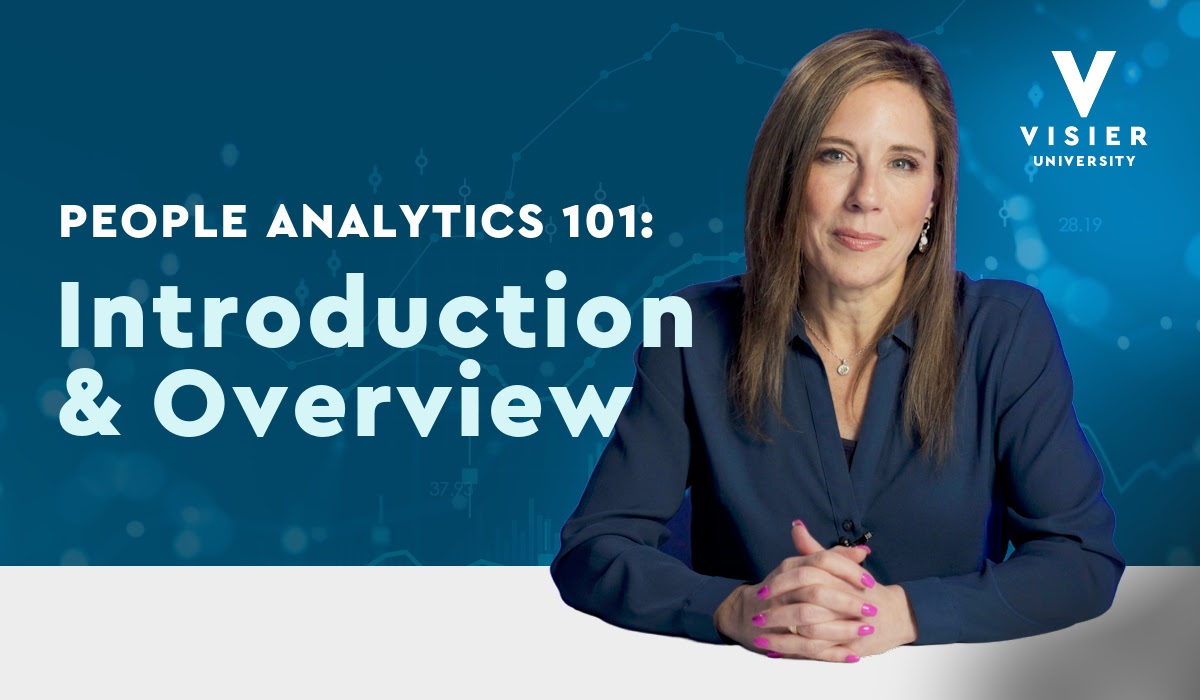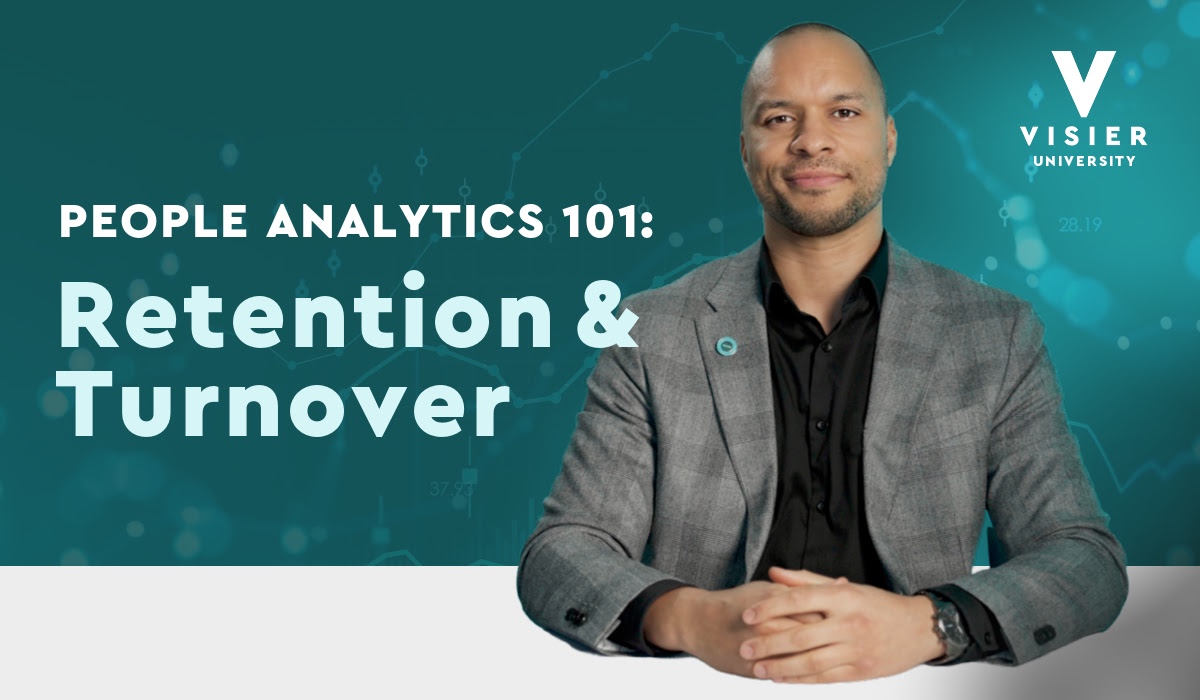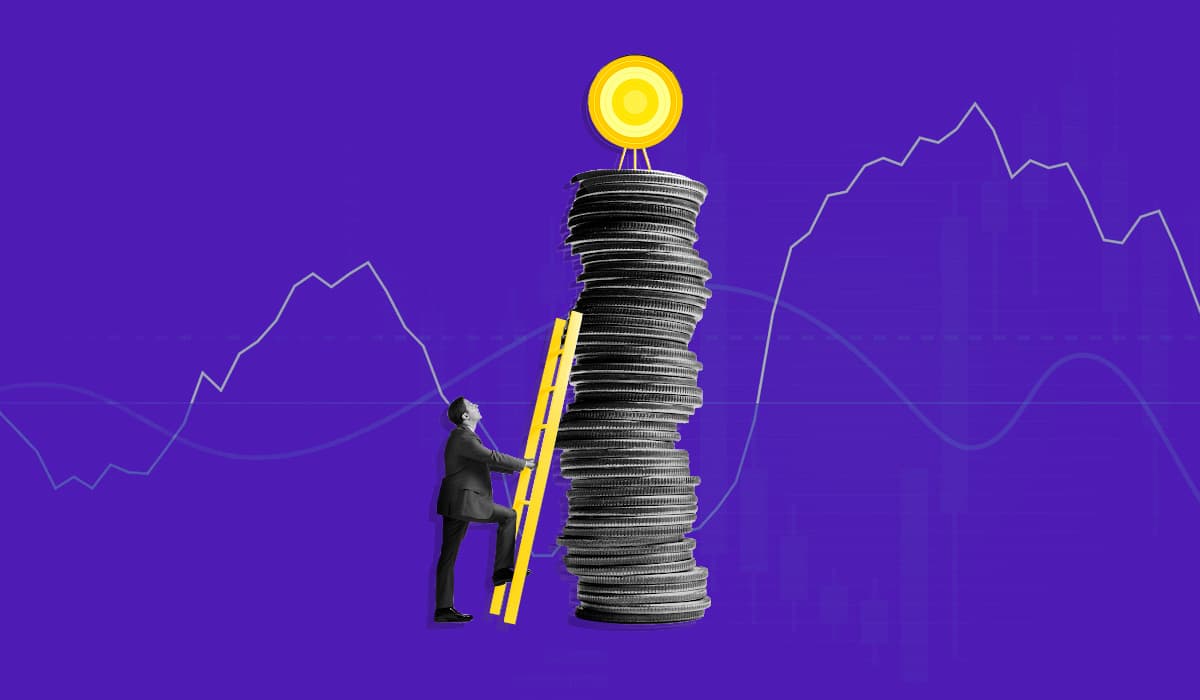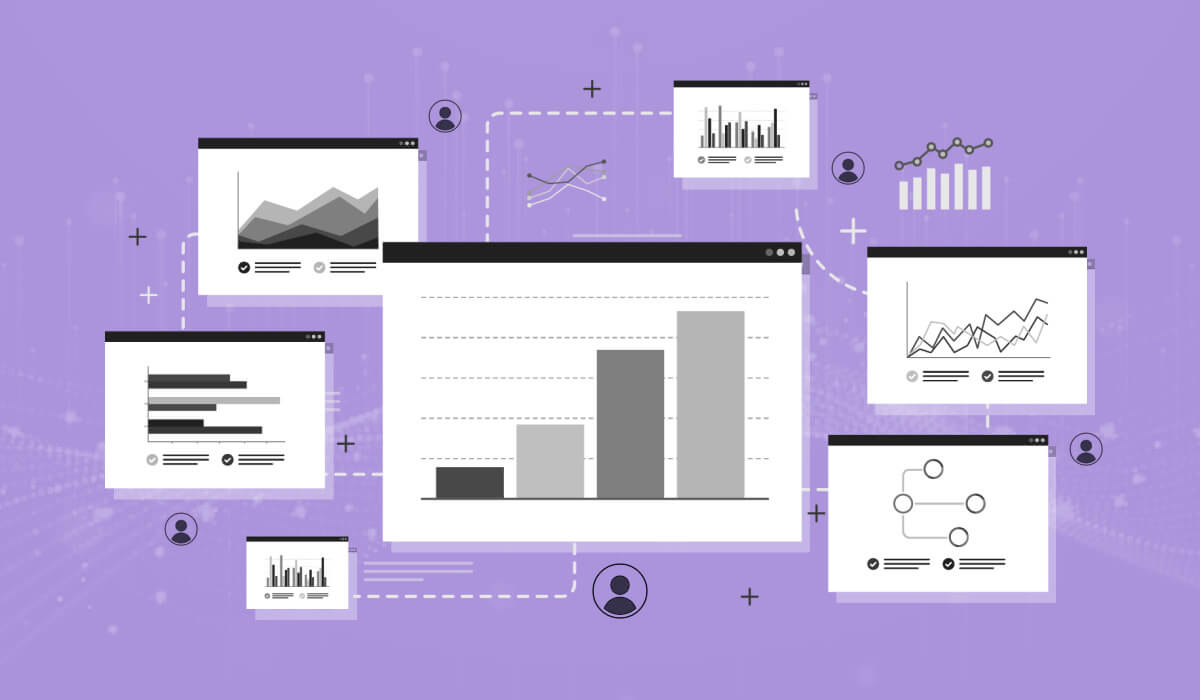PEOPLE ANALYTICS
The Complete Guide to People Analytics
People analytics transforms data about your workforce into valuable insights that can enhance your business. Learn how to use people analytics to drive strategic decisions.
Take a self-guided tour
Table of contents
What is people analytics?3 benefits of people analytics5 examples of people analytics in actionHow to get started with people analyticsHow to create a people analytics strategyMaximize business impact with people analyticsWhat is people analytics?
People analytics is the practice of gathering data about the employees and the company and converting it into useful information that helps enhance business operations. People analytics is also often referred to as workforce analytics or HR analytics.
There is a misconception that people analytics is the same as reporting. That’s because both practices involve analyzing data about various business aspects. However, reports and analytics are very different.
Reporting looks at a wider set of data. It can include information about employees and their performance, as well as financial data, market analysis, and more. You can create reports for a wide variety of audiences, including investors and stakeholders. People analytics focuses more strictly on data related to employees and is primarily utilized by HR professionals.
The three pillars of people analytics
Data. The raw ingredient of people analytics, you can extract data via HR tools like HRIS, HCM, ATS, or payroll.
Analytics. The step that transforms the raw information into digestible insights through complex equations, algorithms, and machine learning techniques.
Insights. The goal of the entire process, your insights will be available via charts, graphs, guidebooks, and other easy ways to understand the information at hand.

3 benefits of people analytics
Many companies rely on simplistic workforce metrics that can provide limited insights into what is truly happening, why certain problems are arising, or why a certain sector outperforms another.
A report on 1,000 employees will show you the ins and outs of how well they performed and what they achieved. But it won’t help you understand why these things happened. People analytics help you use your workforce data in a way that can truly improve your business. Here are some of the most important benefits of people analytics.
1. Better hiring decisions
Hiring can be a challenging and costly process, so you need to be aware of how to improve it and ensure the candidates you choose will be successful. For example, you can use people analytics to evaluate data from past hires and highlight the top performers.
With this information at hand, you can adjust the talent acquisition process to attract the type of people who are likely to be the best fit. Perhaps it is as easy as creating a more comprehensive job description or adjusting the interview process. People analytics will show you exactly where you need to focus your efforts to get the best results.
2. Lower turnover rates
High voluntary turnover rates can significantly disrupt an organization. You lose valuable employees and with them, performance, productivity, and revenue will soon drop. Use people analytics to identify areas that need improvement.
Start by looking at any data that will help you understand why people are leaving. Examples include exit interviews, employee feedback, and HR metrics, such as absenteeism or productivity. All these insights will help you understand what is happening with your workforce and what you can do to lower turnover rates.
3. Improved performance management
People analytics is mostly used by HR professionals, but it isn’t reserved for this department. Managers can also use it to make better decisions about merit rewards and succession planning, for instance.
Instead of looking at random metrics, you can use people analytics to understand the drivers behind each employee’s results. You’ll be able to better motivate and assist your employees so that they can get the best results. Plus, you’ll spot things like a sudden drop in performance and potential solutions.

5 examples of people analytics in action
Companies that use people analytics can easily outperform those that don’t. People analytics and insights enable you to pay close attention to what drives your workforce and have a clear view at all times of what's working—and what isn’t. Visier customers have a higher return on assets, profit margins, and return on equity than industry benchmarks.
Here are a few examples of the different ways companies use people analytics.
1. Reduce turnover
Sunstate Equipment, a company that provides equipment and tool rentals for construction, struggled because they had no people analytics tools. The team knew they were missing out on valuable insights about their workforce. They struggled to understand things like voluntary turnover, and any data analysis took far longer than it should have.
Once they began using Visier’s people analytics solution, they could quickly and clearly see what drove their workforce to perform their best, as well as what made them leave the company. Sunstate Equipment used these insights to inform business decisions and reduce turnover by 50% while increasing productivity and engagement.
2. Diversity and inclusion
Protective Life, a company based in Birmingham, AL with over 3,700 employees, was able to reduce turnover and improve DEIB with people analytics. As the company started to grow, so did the amount of data they had. They needed a better, faster way to gain insights and make quick, data-informed decisions.
Protective Life was able to eliminate spreadsheets to help HR scale faster, expand capabilities, and centralize data. Since implementing Visier, they've been able to increase data access to engage leaders beyond HR. The organization has a better understanding of voluntary turnover and improved its focus on data-driven DEIB efforts.

3. Strategic workforce decisions
Using people analytics, Standard Bank Group, a company represented in 27 countries, empowers over 5,000 line managers to make better workforce decisions. With Visier, they're able to forecast resignations, enable predictive workforce planning models, and build better diversity objectives.
Standard Bank Group has used people analytics to improve workforce planning initiatives, amounting to 1000s of work hours saved. By leveraging Visier's workforce planning capability, they can model cost optimization scenarios based on specific business assumptions, across various dimensions.
4. A holistic view of the employee lifecycle
Looking at an employee’s metrics is a great way to measure progress. But sometimes, you need to look beyond that to get a complete, holistic view of the employee lifecycle. That’s exactly what UKG was looking for when they started using Visier’s people analytics solution.
With it, they got better insights into their talent acquisition strategy, as well as the motives behind voluntary attrition. They created DEIB scorecards to track inclusion metrics and improve diversity. Finally, they obtained a holistic view of their recruiting funnel and internal mobility, improving the employee lifecycle experience.
5. Employee experience
A good employee experience is critical to productivity and performance. If you struggle to understand how you can improve your employees’ experience, people analytics may be the solution you need.
Global commerce company eBay has used Visier’s People Analytics solutions to increase access to HR insights, drive better business decisions, and use data to find new ways to improve retention, compensation, and career development plans. By combining their people data and business data, eBay’s HR team can make data-driven decisions that improve the employee experience and benefit the company as a whole.

How to get started with people analytics
Starting with people analytics can feel confusing at first. Here are a few steps that will get you on the right track from the start.
1. Define your goals
Before you think of the “how,” you must know the “why.” Determine how you will use people analytics at its current stage and as it scales.
What strategic questions do you need to find answers to? This will set your strategy for the future and will help you select the right tools for your needs.
2. Collect the right data
Now that you know the goals, you can identify the data you’ll need to collect. This may be demographic information, metrics, performance reviews, and even exit interviews.
The more varied the sources, the better your chances of getting accurate, unbiased results. Don’t forget about data privacy—you don’t want any personal data leaked during this process.
3. Choose the right people analytics tools
Manual people analytics could work for a small set of data. But as the company grows, analyzing things manually will be more and more difficult. Select a tool that can help you streamline the process and allow you to see the results you want.

How to create a people analytics strategy
People analytics is a powerful tool. But to use it to your advantage, you need a strong strategy. Here are a few steps to help you create the best people analytics strategy for your company.
1. Decide what problems you’re trying to solve
This step goes in line with the goals you defined when starting people analytics. Now, dive deeper into the heart of the problem.
Your goals could be to improve retention, talent acquisition, or employee engagement. Now you’re looking at specific problems. Perhaps you have an increased voluntary turnover rate, so you need to understand why it is happening and how you can solve it.
Don’t forget to stay realistic. Solving all your problems at once would be nice, but it might be better to take them one at a time. Linking people analytics to your business goals is another critical part that will ensure your success.
2. Review data and look for gaps
Look at the problems you want to solve, the business goals, and then the data you have and the sources you use. Do you collect enough information? Is it accurate and up-to-date? Are there any additional sources you could use or, on the contrary, any you could stop using because they’re not producing accurate results?
3. Turn insights into action
Once you have the data, analysis, and insights, it's time to put it all to use. This step is not reserved for the HR department. Collaborate with managers and stakeholders to use insights to achieve business goals. Grant leaders and people managers access to people analytics to share insights across teams quickly.
4. Monitor and refine
Like many other HR processes, people analytics is not a one-time process. You’ll need to refine your strategy constantly, add new data, conduct a new analysis, and obtain new insights. Track metrics and KPIs to help you see if the practice is helping you reach your goals and make adjustments accordingly.

Maximize business impact with people analytics
There’s an undeniable need to put people at the center of your business. Happy employees are more productive, perform better, and can create positive, lasting change. Using people analytics alongside HR metrics will give you an in-depth understanding of the company and your workforce.
Use people analytics to identify key leaders in your organization, so you can help them grow their careers and skills. Strategically tackle workforce planning to make data-informed decisions and create plans that are adaptable, realistic, and will drive success. Glean insights into what’s working in your talent acquisition process, and where you can make improvements to attract high performers.
People analytics enables you to spot patterns and trends so that you can answer key questions about your workforce. No more guessing why productivity is higher in one department than in others. You won’t need to wonder why certain employees adapt to a new environment days after you hired them while others need months.
With people analytics you can see insights and answers quickly, enabling you to make better business decisions and drive impact where it matters most.








